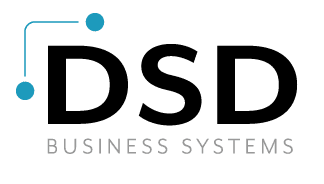What is Inventory Management?

Inventory management is the handling of non-capitalized assets and stock merchandise. Inventory managers supervise the supply chain – the flow of products from the manufacturing facility to storage warehouses – then from the warehouses to points of sale. The main goal of inventory management is to keep an accurate, detailed record of each item as it enters and leaves a warehouse or point of sale.
Inventory management involves inventory control, which allows a business to minimize its costs of inventory and maximize its ability to provide products to customers. Understanding inventory management is the first step in mastering product flow and profitability.
What Are Non-Capitalized Assets and Stock Merchandise?
To understand what a non-capitalized asset is, you must first understand what a capitalized asset is. A capitalized asset is an item a business owner enters into the balance sheet as one of ownership, such as property or equipment. Capitalized assets help a company make profits, and are not sold in the regular course of business. Capitalized assets generally have long-term lifespans or are useful for at least longer than one year.
Property, buildings, machinery, and stocks are examples of capitalized fixed assets. A business would sell its capitalized assets only in a situation such as bankruptcy or restructuring. Non-capitalized assets typically cost less than $5,000 and/or have a lifespan of less than one year. A business sells these items in its regular course. It’s up to a company’s policy to determine capitalized and non-capitalized assets.
Inventory management centers on overseeing non-capitalized assets as they flow from manufacturer to warehouse to point of sale. Non-capitalized assets do not, however, include stock items. Stock items are products you physically have in your store. Every piece of stock merchandise has a quantity. When you sell a piece of this merchandise, you deduct its quantity. Stock items are products distinctly for sale. Although many use the terms interchangeably, inventory involves both the finished products for sale and the items used to create the products. Stock only describes finished products for sale.
The Goal of Inventory Management
Inventory management oversees the quantities, procurement, and movement of both non-capitalized assets and stock items. By efficiently managing these two items, a business can track its inventory expenses and profitability. Good inventory management never lets inventory get too high or dwindle to levels that could affect the success of the company. It also seeks to control inventory-related costs, such as transportation expenses, tax burdens, and total value of goods. Inventory management involves three key tasks:
- How long it takes your supplier to process a product order and deliver what you need. You must also understand the time it takes for products to transfer out of inventory.
- Buffer stock calculation. “Buffer stock” includes the additional items you have above the absolute minimum number you need to maintain production levels. An inventory manager must keep track of raw materials through various stages of operation. A good inventory manager strikes a balance between having too much buffer stock and not enough.
- Keeping accurate records of finished goods. Inventory management also includes keeping track of finished goods ready for shipment – adding those fresh out of production to inventory and deducting recent transfers of goods to points of sale.
Inventory management involves many complex calculations and a deep understanding of a business’s raw materials, inventory, and stock items. Proper inventory management allows a company to maximize profitability and deduct waste on excess items in a warehouse. Maintaining the optimum amount of inventory allows a business to enjoy uninterrupted production, sales, and customer service at minimum costs. Use our inventory management discovery tool for an ideal solution tailored for your company.
























